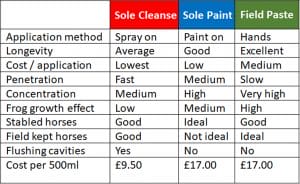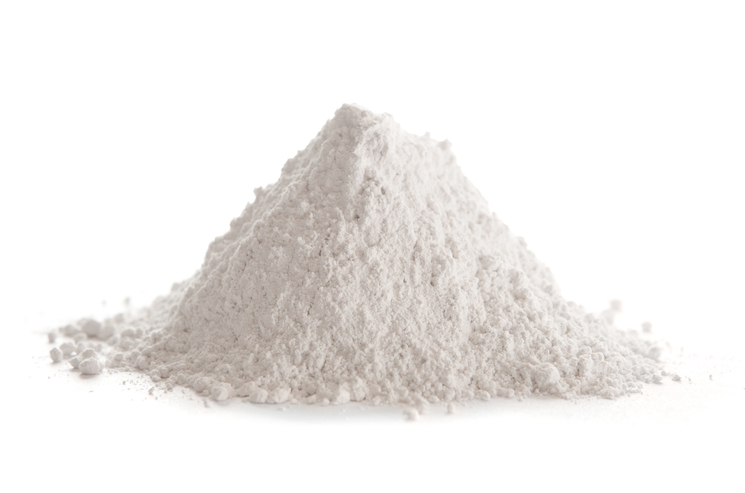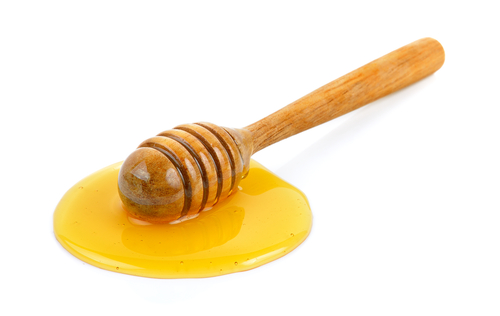Hoof-Stuff
Cleansing material to fill hooves
Hoof-Stuff fills deep holes and cracks, protecting hooves that are sensitive to dirt. Active ingredients cleanse while natural fibers provide pressure to support and promote healthy, natural tissue growth.
Due to its fibrous, sticky consistency, Hoof-Stuff stays in place well, allowing the active ingredients to provide long-lasting support to healthy tissue.
Hoof-Stuff can be useful for protecting white line cracks, central sulcus separation, cavities, and grass cracks. Try Artimud for shallower, wider cracks.
For deeper cavities and abscesses that may go deeper than easily visible, we recommend using Hoof-Stuff only under the guidance of your veterinarian or hoof care specialist. In these situations, it’s important to ensure that all filling is regularly removed before adding more material to prevent buildup.
Remove dirt from the hooves and clean them if necessary. Use Sole Cleanse or salt water to flush dirt from the cavity to be filled. Allow to dry or use cotton wool to dry as much as possible. Push small pieces of Hoof-Stuff deep into the cavity using a hoof pick, without causing sensitivity. It’s best not to fill the cavity completely to the surface, and in frog cavities, leave cracks behind the filling to close – this helps keep the filling in place. We recommend removing the filling after 2 days. If it comes out clean, it can stay in longer next time, and if it comes out dirty, it’s best to replace it more frequently. Avoid getting the cavity wet before filling unless it needs to be flushed due to dirt that has gotten in.
For deeper cavities and abscess tracts that may extend deeper than easily visible, we recommend using Hoof-Stuff only under the guidance of your veterinarian or hoof care specialist. In these situations, it’s important to ensure all filling is regularly removed and before adding more material to prevent buildup.
Dedicated to using the most natural ingredients possible
Since we started Red Horse in 2006, we have been committed to using the most natural ingredients possible, ingredients that are effective and deliver great results, but at the same time are gentle on horses’ hooves and tissue. This commitment forms the core of our promise to our customers and is an essential part of the brand and our company.
That’s why we have always been careful to avoid the harsh substances and bulky fillers often found in many mass-produced products, and have sought out and selected suppliers that enable us to fulfill this promise through our range.
Should I rinse the crack before filling it?
Ideally, at least the first time. Allow the cleft to dry thoroughly before applying Hoof-Stuff to ensure better adhesion of the product.
What should I use to rinse the crack?
We recommend using Sole Cleanse, but any ‘mild’ agent is suitable, such as salt water, diluted vinegar, etc. Do not rinse with peroxide, bleach, iodine, etc., as these can damage otherwise healthy tissue.
How do I know if I’m replacing it often enough?
If you remove the pack and it is still bright white and clean, you probably don’t need to replace it as often. If it is discolored, you should replace it more often. We recommend replacing the pack after 24 hours initially and then adjusting according to the condition of the pack.
Should I flush the cleft every time I replace the Hoof-Stuff?
Once the cleft has been flushed, it doesn’t need to be cleaned again if no dirt gets in (i.e., if the Hoof-Stuff stays in place). Hoof-Stuff adheres better in a dry cleft.
Should I use Hoof-Stuff or Artimud?
Hoof Stuff is generally used when the cleft is deeper and can hold a textile-based dressing. As a general rule: deep and narrow = Hoof Stuff, shallow and wide = Artimud.
Test if damp cotton stays in the cleft. If it does, Hoof Stuff works best. If not, choose Artimud.
Can I use Hoof-Stuff in an abscess cavity?
Make sure the abscess has fully drained before applying the filler and remove Hoof-Stuff twice a day initially to ensure no moisture builds up behind it.
Can I use Hoof-Stuff under horseshoes?
Yes, Hoof-Stuff can be applied in a white line fissure, for example, and a horseshoe can be placed over it.
How do I get Hoof-Stuff out of the pot?
Wedge the fibers out with a hoof pick and place a few pieces on the inverted lid, ready to finish.
How can I make Hoof-Stuff softer?
Hoof-Stuff gets harder when it is cold and softer when it is warm. Over time, the honey in it can also crystallize, making it harder. Storing it in a warm place for an extended period of time will make it softer again.
Do I need to wear gloves when using Hoof-Stuff?
From a safety point of view, this is not necessary, but it can be a good way to keep your hands clean.







Reviews
There are no reviews yet.